BACK TO finalistS
Finalist: Architectural Category
THE GREEN TERMINAL
THE GREEN TERMINAL A HAWKER CENTRE RE-IMAGINED EMBODYING CIRCULAR SUSTAINABILITY IN THE FORMER TANJONG PAGAR RAILWAY STATION, SINGAPORE. BACKGROUND Despite its small size, Singapore generates a substantial amount of waste. The country has implemented cutting- edge waste management systems, including five Waste- to- Energy (WTE) plants and the Semakau Landfill, one of the world's most […]

THE GREEN TERMINAL
A HAWKER CENTRE RE-IMAGINED EMBODYING CIRCULAR SUSTAINABILITY IN THE FORMER TANJONG PAGAR RAILWAY STATION, SINGAPORE.
BACKGROUND
Despite its small size, Singapore generates a substantial amount of waste. The country has implemented cutting- edge waste management systems, including five Waste- to- Energy (WTE) plants and the Semakau Landfill, one of the world's most advanced off- shore disposal sites. However, like most resources, this solution isn’t infinite. The Semakau Landfill’s capacity would be at its maximum by 2035. Through the Zero Waste Nation movement, it has been identified that food and packaging waste are two out of three of the driving factors in waste that goes unrecycled. Upon initial observation, one can recognize that the Hawker Centres, cherished by all Singaporeans, play a significant role in contributing to this.
In response to this, the Green Terminal aims to increasing public awareness about individual waste generation can empower people to adopt practices like those implemented in Hawker Centres in their daily lives. The envisioning of a re- imagined Hawker Centre has the potential to inspire the public and serve as a catalyst for the redesign of more sustainable establishments, including Singapore’s Kopitiams or "coffee shops."
DESIGN CONCEPT
The Green Terminal’s location in Tanjong Pagar is a significant part of Singapore’s history, much like the beloved Hawker Centres. History itself is a complex and multifaceted narrative, composed of countless threads of information and collective memories. Each piece adds depth and richness to our understanding of the past.
In earlier times, people practiced a technique known as palimpsest, where they would re- edit historical documents by partially or completely removing existing text to write new information over it. This concept of layering and rewriting is mirrored in the work of architects and designers. They take what already exists and build upon it, adding their own stories and interpretations.
Palimpsest in architecture is an ongoing process, representing the continual transformation of spaces over time. It serves as a metaphor for the evolving nature of architectural design, where each new layer reflects a blend of past influences and present innovations. By employing the concept of palimpsest, architects can uncover the historical layers within a site, allowing them to extract and integrate various design elements. These interwoven layers guide the planning and distribution of functions within a space, creating a rich, multifaceted design that honors the past while embracing the future.
CONCLUSION
In recent years, Singapore’s commitment to sustainability has seen a large growth, with increased awareness and concern for environmental issues. The government's initiatives, coupled with a rising eco-consciousness among businesses and individuals, reflect a collective effort to adopt sustainable practices and address the challenges of climate change in the nation. The Green Terminal brings to light that some things rooted in our culture like Hawker Centres, need to start catching up in terms of sustainability. In the heart of the city lies the Green Terminal, a unique space where urban life intertwines seamlessly with nature.
As you enter the main building of the Green Terminal, you are greeted by the lively atmosphere of an urban hawker center. The aroma of diverse cuisines fills the air, and the vibrant energy of people enjoying their meals is palpable. However, this is just the beginning of an extraordinary journey.
Moving through the hawker center, the environment gradually transforms. The concrete pathways give way to greener, more organic materials as you approach the train platform. This space is a nexus of activity where urban lifestyles meet the tranquility of nature. Commuters, joggers, and cyclists share the area, their routines interwoven with patches of greenery that soften the urban edges.
The standout feature of the project is its unique blend of modern design elements with a distinct local flavor. Amidst its contemporary design, the essence of Singaporean Hawker culture remains palpable within the Green Terminal. Reminiscing through forgotten MRT seats from old trains, peranakan tiles and an interpretation of the mosaic void deck tables. While it could have easily been another sustainable food court, my goal was to underscore its identity as a distinctly Singaporean establishment. I wanted to make sure that we, as Singaporeans and local residents, know that the Green Terminal is in Singapore and for Singapore.
The Green Terminal is more than a physical structure; it represents a circular lifestyle program. In this innovative space, the boundaries between the urban and the natural dissolve, fostering a deeper connection with the environment. The Green Terminal stands as a testament to Singapore's vision of a "City in a Garden," showing that sustainable living is not just about preserving resources but also about nurturing the ecosystems that support all life.
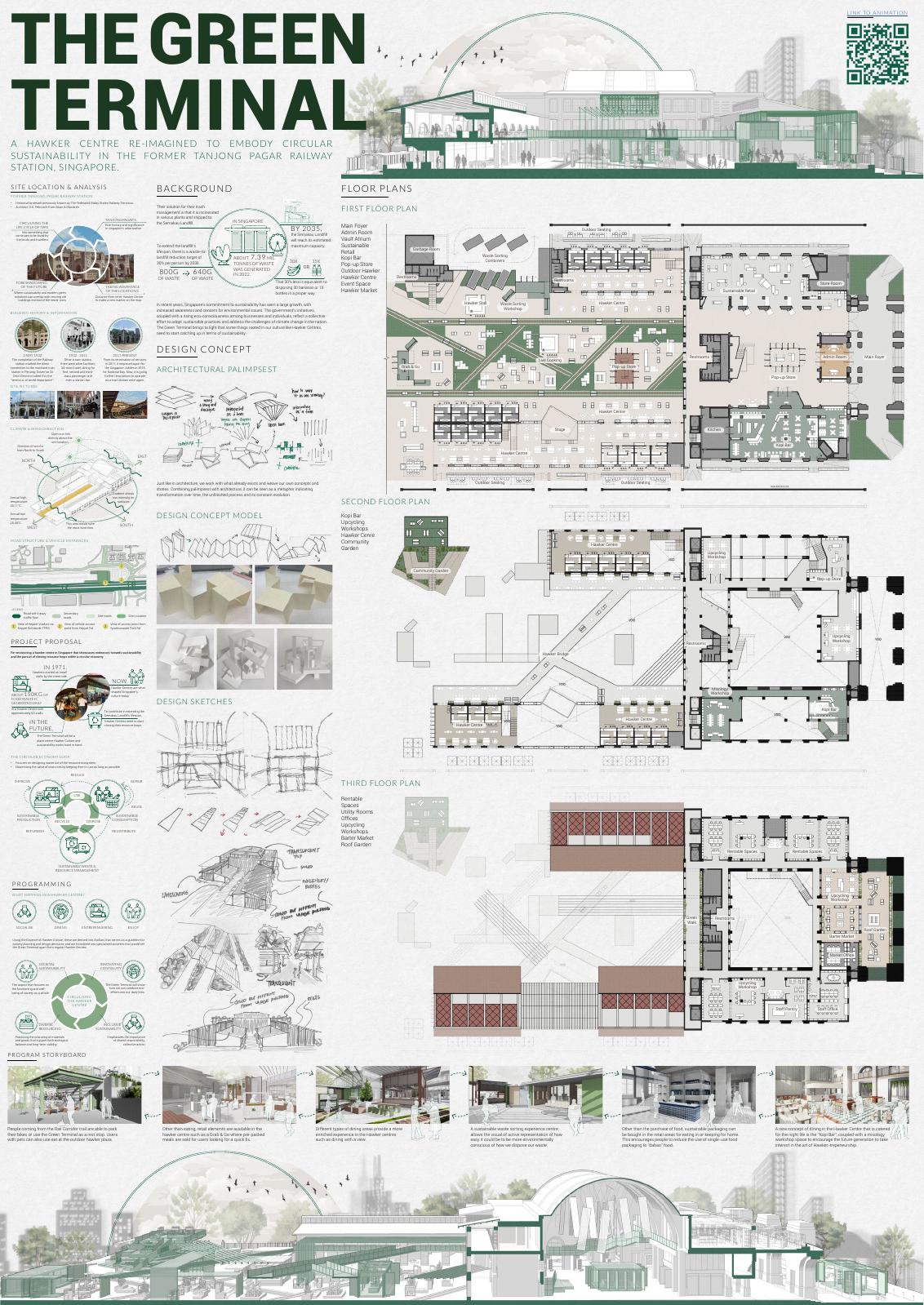
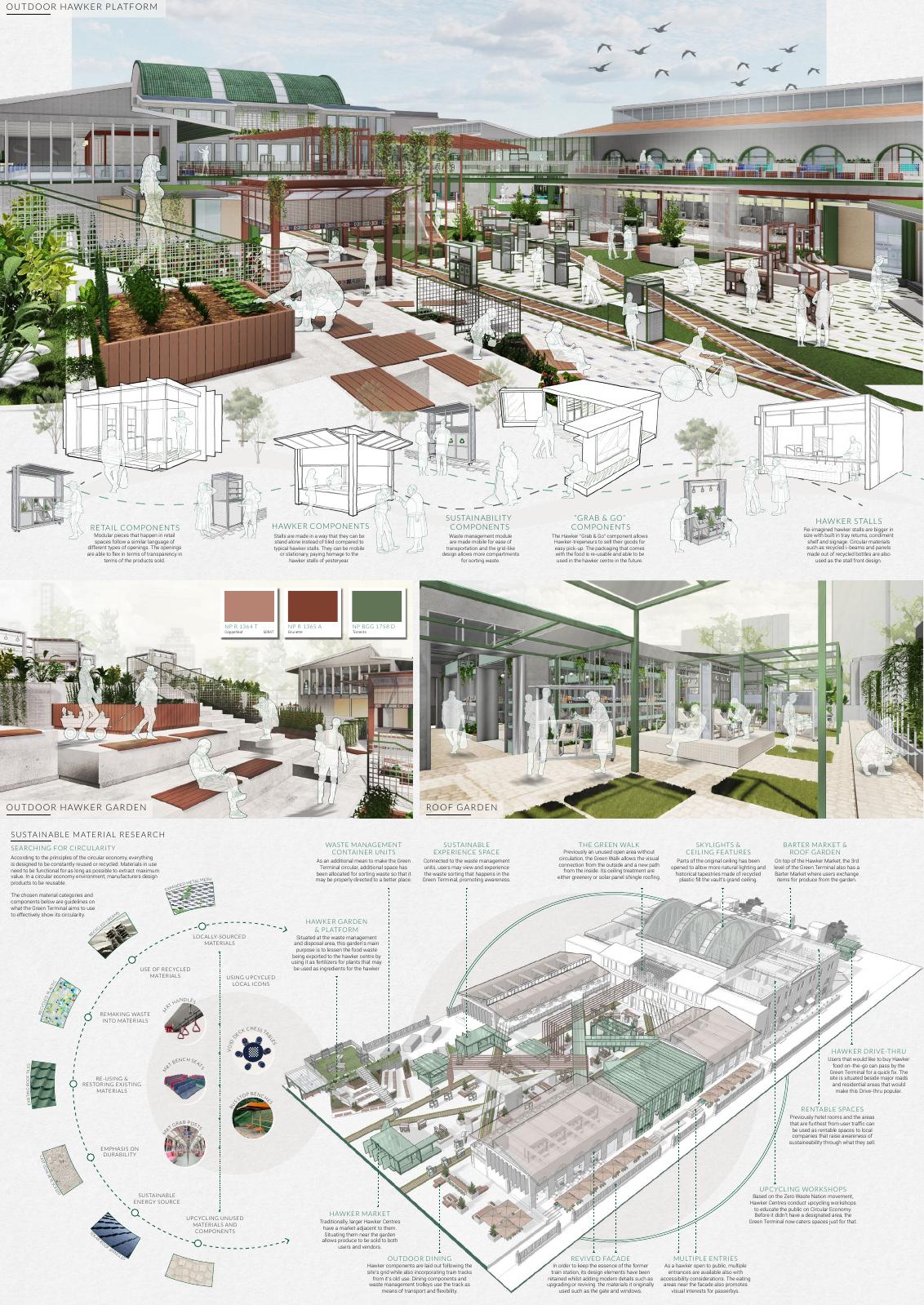
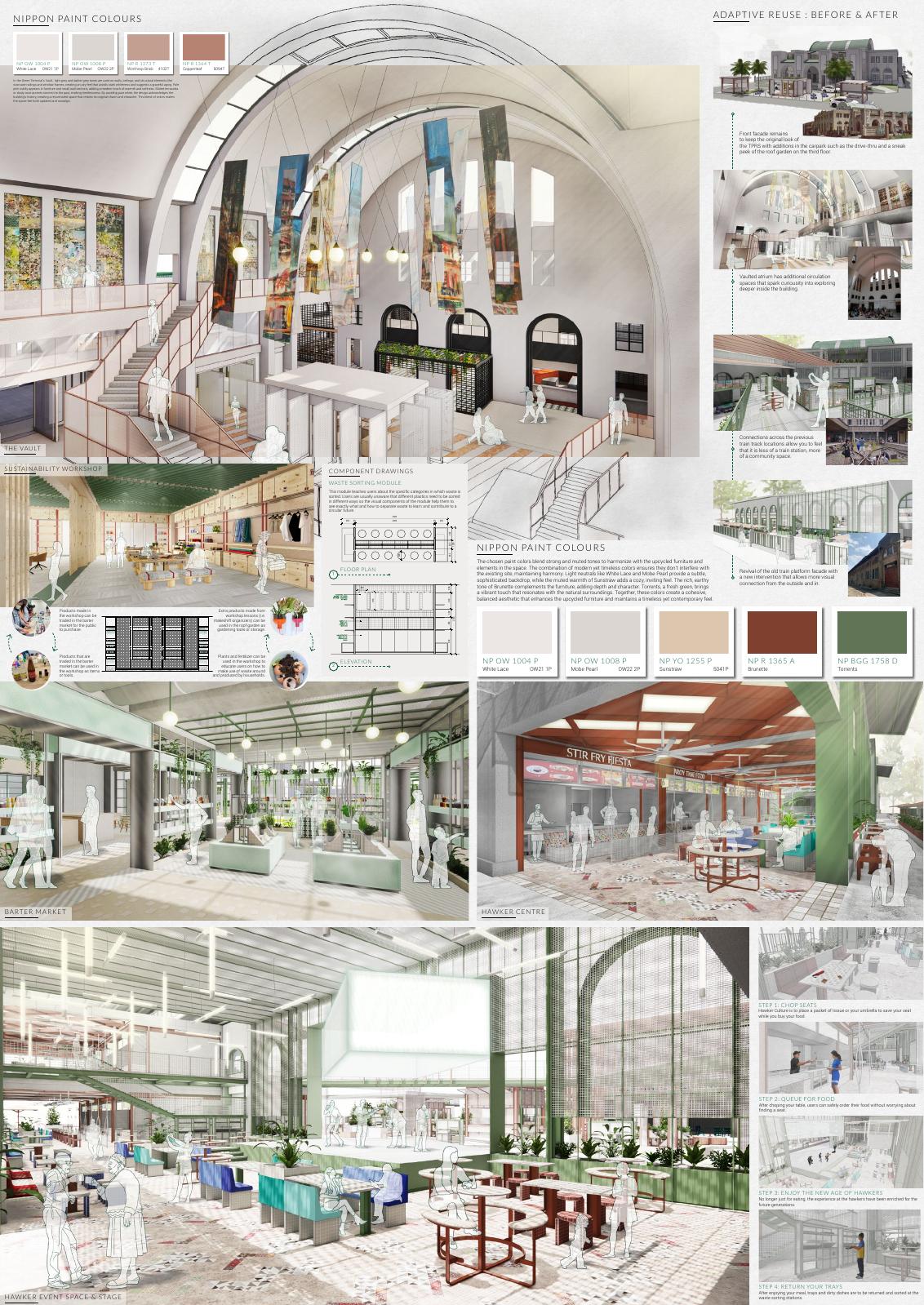
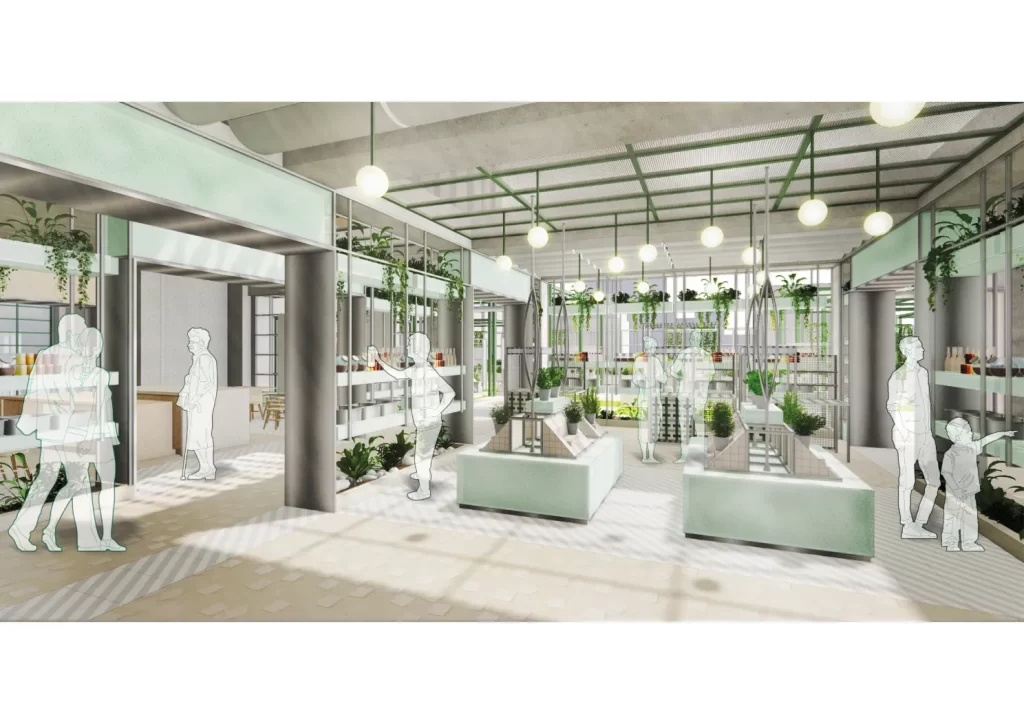
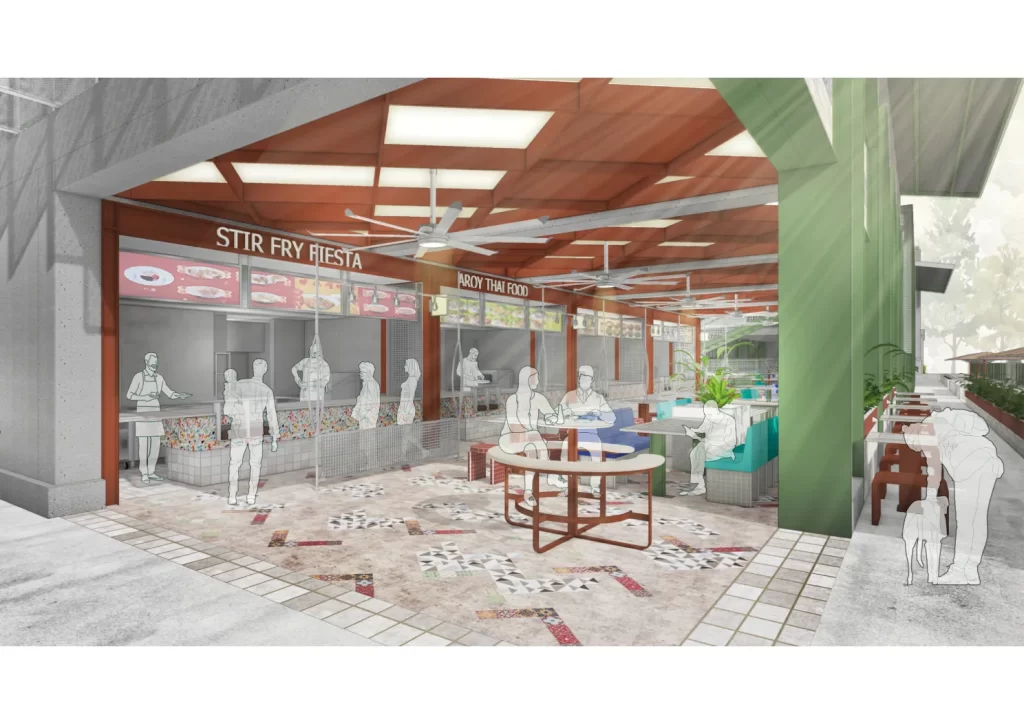
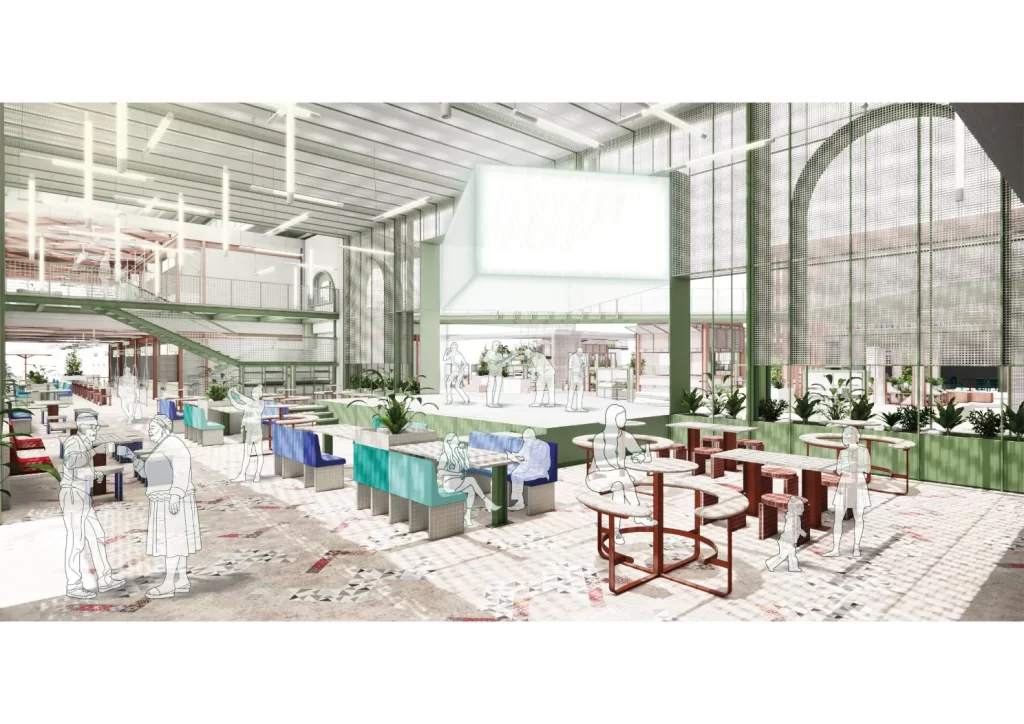
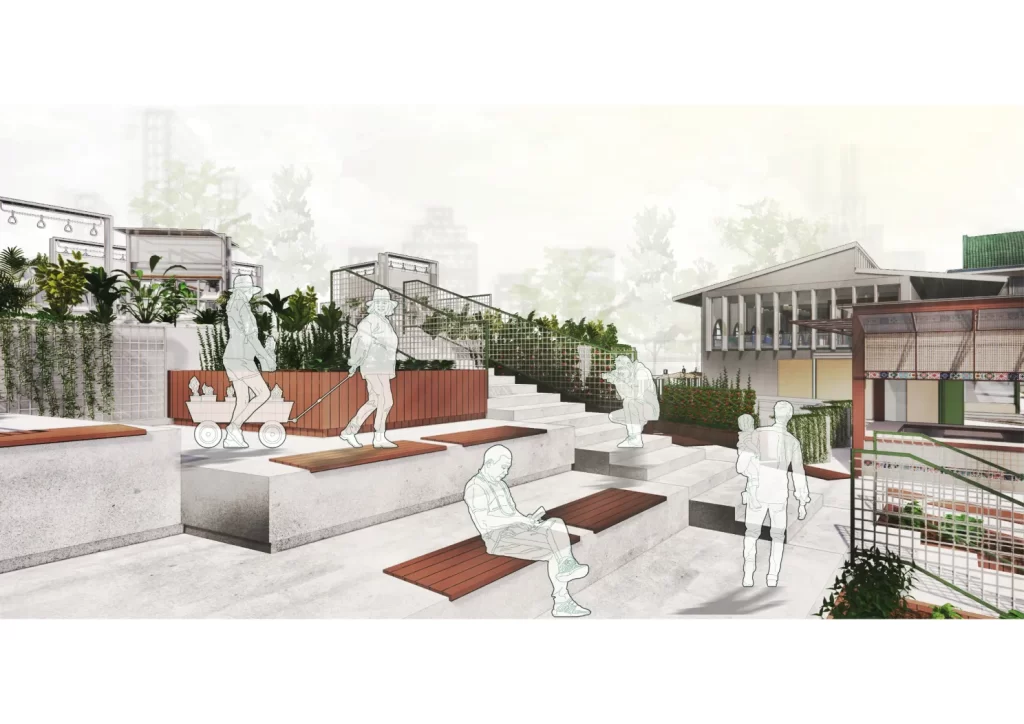
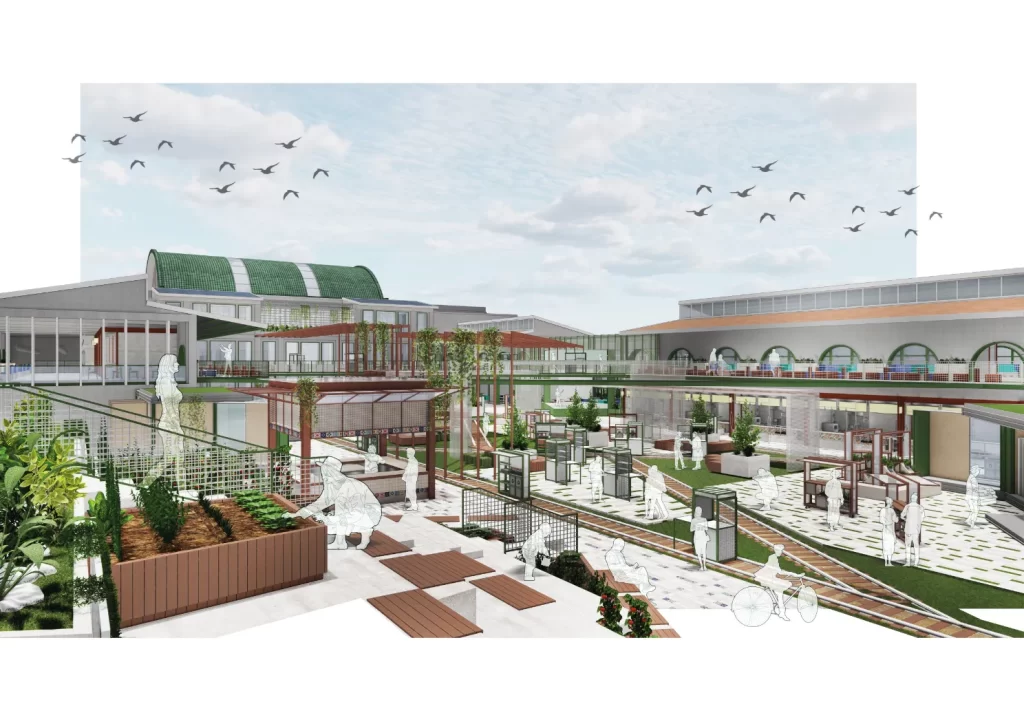
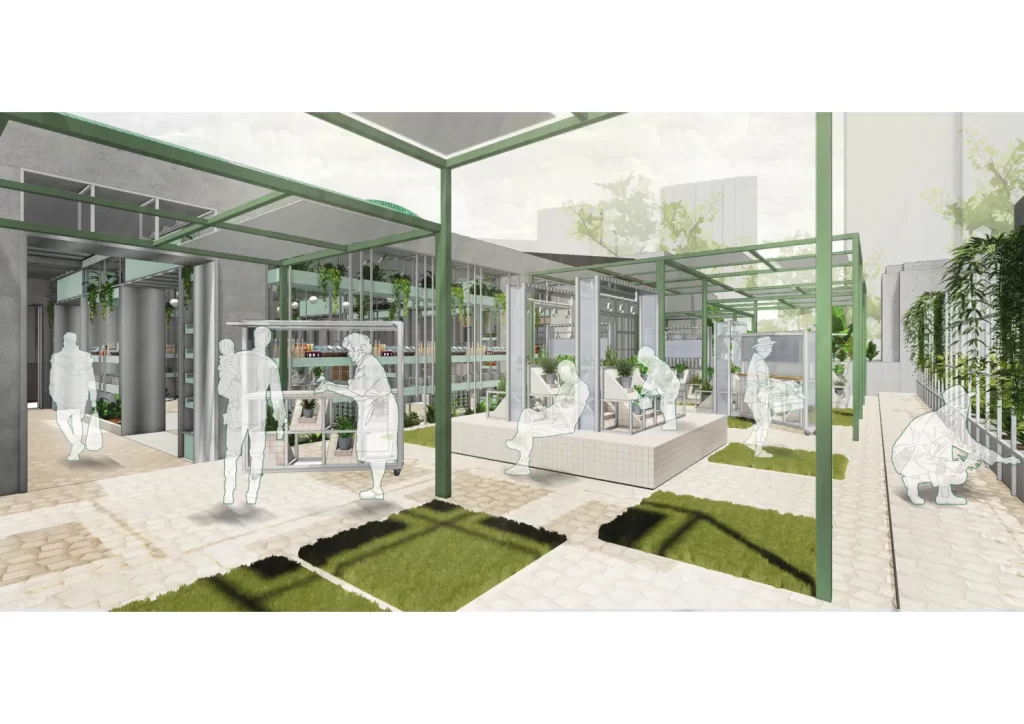

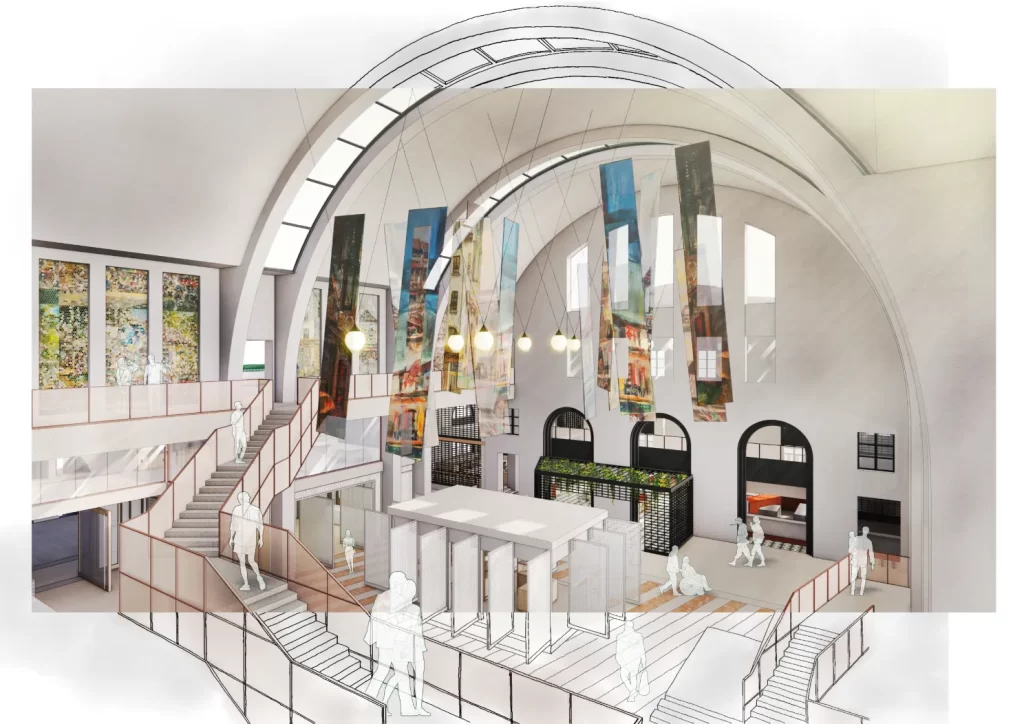
Showcase your design to an international audience
SUBMIT NOW
Image: Agrapolis Urban Permaculture Farm by David Johanes Palar
Top
THE GREEN TERMINAL A HAWKER CENTRE RE-IMAGINED EMBODYING CIRCULAR SUSTAINABILITY IN THE FORMER TANJONG PAGAR RAILWAY STATION, SINGAPORE. BACKGROUND Despite its small size, Singapore generates a substantial amount of waste. The country has implemented cutting- edge waste management systems, including five Waste- to- Energy (WTE) plants and the Semakau Landfill, one of the world's most advanced off- shore disposal sites. However, like most resources, this solution isn’t infinite. The Semakau Landfill’s capacity would be at its maximum by 2035. Through the Zero Waste Nation movement, it has been identified that food and packaging waste are two out of three of the driving factors in waste that goes unrecycled. Upon initial observation, one can recognize that the Hawker Centres, cherished by all Singaporeans, play a significant role in contributing to this. In response to this, the Green Terminal aims to increasing public awareness about individual waste generation can empower people to adopt practices like those implemented in Hawker Centres in their daily lives. The envisioning of a re- imagined Hawker Centre has the potential to inspire the public and serve as a catalyst for the redesign of more sustainable establishments, including Singapore’s Kopitiams or "coffee shops." DESIGN CONCEPT The Green Terminal’s location in Tanjong Pagar is a significant part of Singapore’s history, much like the beloved Hawker Centres. History itself is a complex and multifaceted narrative, composed of countless threads of information and collective memories. Each piece adds depth and richness to our understanding of the past. In earlier times, people practiced a technique known as palimpsest, where they would re- edit historical documents by partially or completely removing existing text to write new information over it. This concept of layering and rewriting is mirrored in the work of architects and designers. They take what already exists and build upon it, adding their own stories and interpretations. Palimpsest in architecture is an ongoing process, representing the continual transformation of spaces over time. It serves as a metaphor for the evolving nature of architectural design, where each new layer reflects a blend of past influences and present innovations. By employing the concept of palimpsest, architects can uncover the historical layers within a site, allowing them to extract and integrate various design elements. These interwoven layers guide the planning and distribution of functions within a space, creating a rich, multifaceted design that honors the past while embracing the future. CONCLUSION In recent years, Singapore’s commitment to sustainability has seen a large growth, with increased awareness and concern for environmental issues. The government's initiatives, coupled with a rising eco-consciousness among businesses and individuals, reflect a collective effort to adopt sustainable practices and address the challenges of climate change in the nation. The Green Terminal brings to light that some things rooted in our culture like Hawker Centres, need to start catching up in terms of sustainability. In the heart of the city lies the Green Terminal, a unique space where urban life intertwines seamlessly with nature. As you enter the main building of the Green Terminal, you are greeted by the lively atmosphere of an urban hawker center. The aroma of diverse cuisines fills the air, and the vibrant energy of people enjoying their meals is palpable. However, this is just the beginning of an extraordinary journey. Moving through the hawker center, the environment gradually transforms. The concrete pathways give way to greener, more organic materials as you approach the train platform. This space is a nexus of activity where urban lifestyles meet the tranquility of nature. Commuters, joggers, and cyclists share the area, their routines interwoven with patches of greenery that soften the urban edges. The standout feature of the project is its unique blend of modern design elements with a distinct local flavor. Amidst its contemporary design, the essence of Singaporean Hawker culture remains palpable within the Green Terminal. Reminiscing through forgotten MRT seats from old trains, peranakan tiles and an interpretation of the mosaic void deck tables. While it could have easily been another sustainable food court, my goal was to underscore its identity as a distinctly Singaporean establishment. I wanted to make sure that we, as Singaporeans and local residents, know that the Green Terminal is in Singapore and for Singapore. The Green Terminal is more than a physical structure; it represents a circular lifestyle program. In this innovative space, the boundaries between the urban and the natural dissolve, fostering a deeper connection with the environment. The Green Terminal stands as a testament to Singapore's vision of a "City in a Garden," showing that sustainable living is not just about preserving resources but also about nurturing the ecosystems that support all life.










